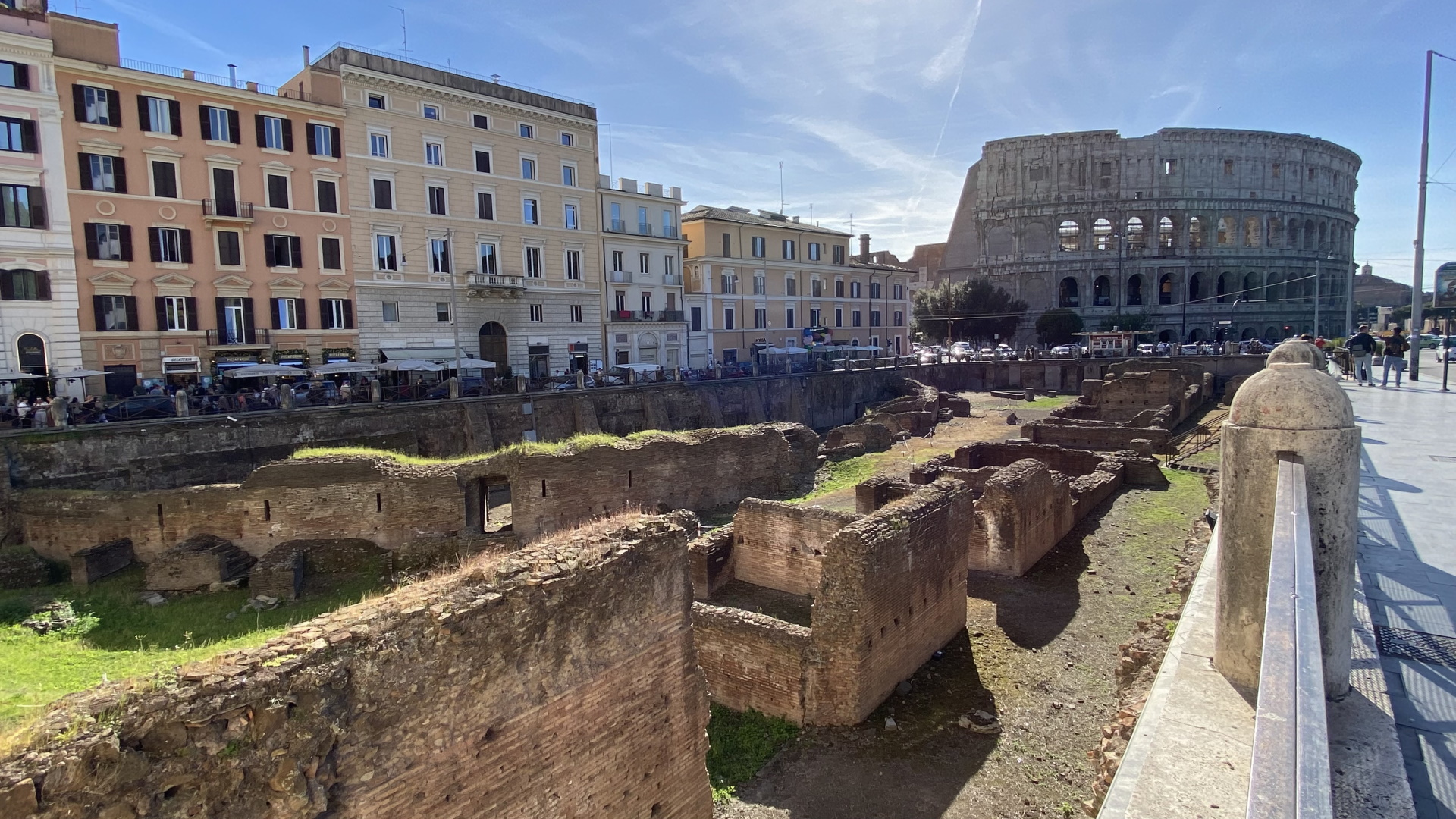
Near the Colosseum, between via Labicana and via di San Giovanni in Laterano, it is possible to see the remains of the Ludus Magnus, the largest gladiatorial training schools in Rome, built by the emperor Domitian (81-96 AD).
The structure was erected according to the shows held in the Flavian Amphitheater, to whose basement it was connected through a gallery. It consisted of a rectangular building of at least two floors, with a porticoed courtyard in the centre. Around the courtyard were cells intended for the accommodation of gladiators, of which 14 on the northern side are preserved. At the north-western corner of the quadriportico, one of the original four small triangular fountains has been restored.
Most of the brickwork structures were originally covered with marble slabs later removed. The characterizing element of the Ludus consists of a miniature amphitheatre in the courtyard, where gladiators practised. The arena was surrounded by a small cavea, intended to contain a limited number of spectators.
The remains of the complex were discovered in 1937, but only twenty years later the exploration was completed; those currently visible belong to a second phase of the monument, attributed to the emperor Trajan (98-117), in which the Ludus plan was raised by about a meter and a half.
In addition to the Ludus Magnus, Domitian built four other barracks: the Ludus Gallicus, the Matutinus, and the Dacicus, which took their name from the place of origin of the gladiators who stayed there.
Near the Ludus, there were some structures, part of a vast complex, in the function of the Colosseum: the Summum Choragicum (storage of scenic equipment), the Saniarum (place for the treatment of injured gladiators), the Spoliarium (where the bodies of the gladiators killed in the arena were placed and stripped of the armour) and the Armamentaria (storages and repair workshops for weapons and armours).
Information
Admission to the monument is allowed to groups and associations, with their own guide, who must make a reservation at 060608 (daily, 9.00 - 19.00).Maximum 30 people per visit.For individual visitors, who must also make a reservation at 060608, individual visits are also possible according to a schedule specified on the page > Monumenti del territorioA partire dal 01/08/2024 il sito sarà temporaneamente chiuso al pubblico per l’avvio delle lavorazioni previste dal PNRR
 Condividi
Condividi
Location
To find out about all accessibility services, visit the Rome accessible section.











































